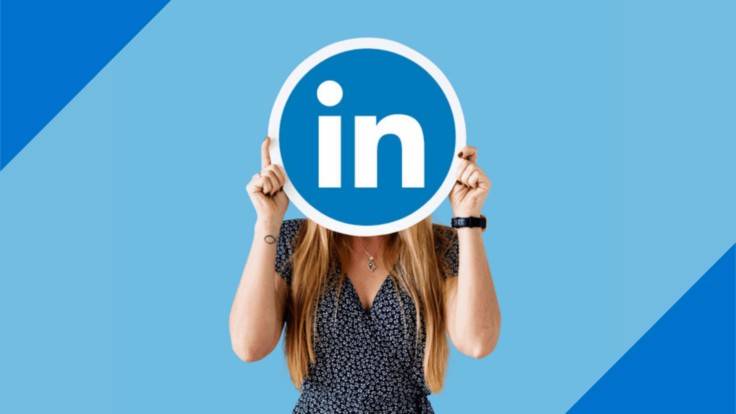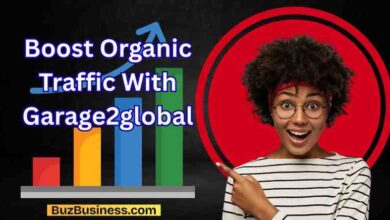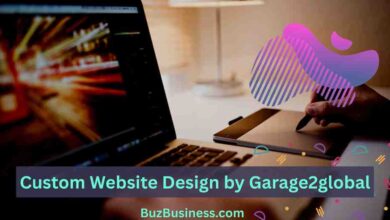LinkedIn Content Creation: Formats, Framework, and Tips

Introduction
Are you running a business brand or planning to start one, but you have no idea how to bring it to life? You’ve just landed on the right article, which saves you all the stress.
We will discuss LinkedIn as our focus platform and breaking down the process of creating the best content for your audience without shoving it down their throats.
LinkedIn has evolved into a vital professional platform used by many. It provides unique opportunities to establish authority and share content that drives your business to success.
However, many users get confused about how to craft the right content for their profiles, which will have a high engagement and still be credible and authentic.
This guide provides actionable steps to mastering LinkedIn content creation and achieving a lasting impact.
TL; DR—How to Create Engaging Content on LinkedIn
In a rush?
Check out the top 4 steps to spark conversations, build trust, and expand your reach. (More in-depth information throughout the blog.)
- To effectively engage your audience, define your goals, understand your audience, plan diverse content, and experiment with different content types.
- Tell stories while asking necessary questions, use visuals with authentic words, and keep it simple, focusing on a clear, single message.
- Engage actively with your audience, use relevant hashtags, and utilize your LinkedIn Ads and analytics to track your performance.
- Address common challenges like low engagement or content burnout with innovative solutions.
What is LinkedIn Content Creation?
LinkedIn content creation involves crafting articles, media, or posts for your LinkedIn account that resonate with your audience professionally.
The best LinkedIn content depends on your overall brand message and business goals.
Overall, you should:
- Create engaging content that shares valuable insights, brand-related news, and incorporates images, videos, and documents to increase engagement.
- Respond to messages, comments, and mentions, and actively engage in relevant discussions.
- LinkedIn has events you can host to engage your audience in real-time and build deeper connections.
- Use LinkedIn Ads analytics tools to track your performance and determine whether your strategy works.
- A clear call to action plays a significant role in conversion, guiding users toward the desired outcome.
If that’s not enough, luckily, LinkedIn has a new creator hub that brings together everything you need to grow your presence on the platform.
Importance of LinkedIn for Content Strategy
Here are reasons why LinkedIn is vital for your content strategy:
- Reaches the Right Audience: LinkedIn has a vast professional network and precise targeting tools to help you deliver your message.
- Deliver Meaningful Content: Connect with decision makers in a space where they seek valuable professional insights.
- Build Genuine Connections: Use LinkedIn to create authentic connections with professionals, clients, and thought leaders in your field.
- Understand Your Audience: Explore LinkedIn profiles, posts, and groups to learn more about your customers and industry trends.
- Diversify Your Approach: To maximize reach, use LinkedIn’s flexibility to share various content formats using free and paid tools.
- Increase Visibility: Stand out with a strong LinkedIn company page and content that grabs your audience’s interest.
- Track Performance: Use analytics to evaluate your performance, test strategies, and continuously improve your content.

What Types of Content Perform Best on LinkedIn
The type of LinkedIn content you choose directly impacts the impressions and engagement you get.
We’ve explored the best content for LinkedIn that works right now.
Multi-Image Posts
Did you know the best-performing LinkedIn content is carousels with a 6.6% average engagement rate, and video posts have risen to 5.6%?
Content such as images and infographics captures attention quickly. Remember to make sure your pictures are clear and consistent to simplify complex ideas.
In-Depth Articles
Native documents come second with an average engagement rate of 6.1%. Posts that provide value and actionable insights are more likely to be saved and shared.
So, write long-form content that explores market trends, ideas, or answers to typical problems. Remember, the aim is to provide value to your audience so they can learn something new. It’s also important to end with a call to action to spark engagement.
Polls and Questions
Polls have an average engagement rate of 4.4% and generate the most impressions.
So, encourage interactions with open-ended questions or polls to promote participation. To encourage deeper discussions and gain a better understanding of your audience, reply to comments.
Text-Only Posts
The statistics further show that text-only posts average a 4% engagement rate.
Therefore, you can share your essential experiences of career lessons learned to create a powerful connection. Emphasize the difficulties, results, and outcomes. Being genuine humanizes you and makes your content more credible and relatable.
LinkedIn Content Creation Framework
Even with a list of the best content formats that perform well on LinkedIn, you need a solid plan to create content that sparks interest and drives engagement.
Let’s get into the 3 steps:
1. Start with a Hook to Grab Interest:
Start with an intriguing statistic, statement, or question that will spark the reader’s curiosity.
For Example, if you’re a lawyer, your hook might be ‘Did you know world leaders like Mahatma Gandhi, Abraham Lincoln, and Nelson Mandela began their careers as lawyers?‘
2. Share Valuable Content
You should establish yourself as a thought leader by sharing guidance and relatable work experiences. Remember to avoid text blocks and use bullet points, emojis, and proper spacing.
For Example: ‘If you’re an architect, share your unique perspective on sustainable designs’
3. End with an Actionable CTA
Encourage your audience to take action, such as sharing, commenting, or pausing to reflect.
For Example: “What is a LinkedIn tactic that you find effective? Leave a comment below.”
Challenges in LinkedIn Content Creation
Even with the framework we’ve broken down above, you might still face some hurdles when creating content.
Check out the top 6 challenges and how you should overcome them:
- Overlying on AI Content: The quality of AI-generated LinkedIn content continues to be an issue—it lacks authenticity and the human touch.
Solution: Prioritize human content like live events and videos that showcase your brand style and personality.
- Adapting to LinkedIn Algorithms: Another significant hurdle is algorithm updates, such as prioritizing posts without external links and the shift towards experts and authority leaders who share original and high-quality posts.
Solution: Focus on creating valuable content and encourage engagement using actionable CTAs. Besides, optimize your posting time and prioritize native formats like text and carousel posts.
- Navigating through Content Saturation: With the LinkedIn space becoming very competitive, it’s difficult to produce content that drives engagement and generates leads.
Solution: Our LinkedIn content specialists can help you use data-informed marketing strategies to create high-performing posts.
- Understanding Your Audience Preference: Knowing what your audience wants is tricky. Your audience can shift their preference over time, and you must stay ahead of these changes.
Solution: Use the built-in LinkedIn analytics tool or third-party tools like Hootsuite to gather insights on the engagement and to refine your content strategy.
- Crafting Compelling Yet Professional Content: Another challenge is coming up with new and engaging content that sparks your reader’s interest and provides valuable insights.
Solution: Find inspiration from industry trends and LinkedIn groups in your expertise.
- Creating Content that Meets Short Attention Spans: Most people’s average attention span is only 8.25 seconds, making it difficult to attract and engage your readers throughout your posts.
Solution: Hook your readers with the first 3 to 5 lines and format your content correctly. Also, create skimmable, clear, and valuable content.

Best Practices for LinkedIn Content Creation.
Besides avoiding the challenges we’ve tackled, you should follow the top tips for your content to stand out and engage effectively with your target audience.
Have a look at these 8 practices that are best for you:
1. Create Attention-Grabbing Headlines
Your LinkedIn headline is the first impression your readers have of what your brand offers.
Ensure that headlines are clear, attention-grabbing, and intended to spark curiosity. Use relevant keywords and make your content easily searchable on LinkedIn.
How to do it: Your headline should describe what you do and why someone should connect with you. Craft a brief, well-tailored statement that uses necessary keywords, mentioning your value position without adding hyperbole.
2. Use Eye-Catching Pictures
Think of your content as newspapers lined up on the station, vying for attention. A spot headline and a great photo will always nail it.
As images take up most of your screen compared to text, readers remember them more than text. An image can make someone stop scrolling a nd pay attention.
Use top-notch images, infographics, or videos that complement your branding and message. Software like Canva can help you create visually appealing and consistent content.
3. Actively Participate in Your Network
Through active participation, you’ll expand your network and build a community that actively engages in your posts.
There are many ways to participate in your LinkedIn profile actively, including responding to comments, interacting with others’ work, and promoting conversations with open-ended questions.
This builds trust with your readers as they’re more motivated to read content with perspectives that align with their own.
4. Deliver Valuable Information
Information is key to every content creator. Rather than openly advertising yourself, be focused on sharing information that will help your audience. Professional advice, business news, and practical insights build your credibility in your field and position you as a reliable thought leader.
5. Prioritize Mobile Optimization
Most of LinkedIn’s users access the website from mobile devices. Therefore, ensure your posts are responsive to what the audience needs. Create images suited for smaller screens, use bullet points to make the text easier to read, and divide the content into well-organized paragraphs.
6. Post When Your Audience is active
How can you know when many of your audience are active? Use LinkedIn analytics to determine when your target audience is most active.
However, timing accurately can be a bit hard because your audience might have constantly changing schedules.
With solutions like LinkedIn Ads, you can target specific industries, demographics, and roles to maximize engagement regardless of when you post.
7. Share Relatable Stories
Your audience will highly engage with your content if they find it relatable. Remember, these are business-based readers who have some unanswered questions in their minds, which might relate to your post.
By seeing this, they’ll stick to your page, and they’re more likely to connect, comment on posts, and share, hence an increased engagement metric like likes, shares, and comments.
8. Use Hashtags Wisely
Using hashtags strategically increases the visibility of your posts, reaching people with similar interests or in the same industry, and tapping into trending topics.
To keep your message focused and chaos-free, use no more than three trending and pertinent hashtags per post.
By following these best practices, you’ll notice a change in your LinkedIn profile engagement, increasing your chances of attracting top talent.
Conclusion
We have just walked you through LinkedIn content creation while highlighting the types of content to use for better LinkedIn engagement, the right framework to use, a few challenges and their solutions, and best practices for your creation journey.
All the sections carry important information that is credible for both those who are struggling with content creation and those who are working to improve their content.
We are more than ready to move with you in every step you take to create credible, authentic, and trusted content for higher engagement and a wider reach.
Frequently Asked Questions (FAQs):
If you still have questions, please visit our frequently asked questions section (FAQs), where we provide additional answers.
Q1. Does LinkedIn Pay Content Creators?
No, LinkedIn, unlike other platforms like YouTube and TikTok, doesn’t pay creators directly. However, LinkedIn creators can monetize their audience and content through various other means, such as brand partnerships, sponsored content, and many different strategies.
Q2. How Important Are Visuals in LinkedIn Content?
Visuals in LinkedIn content are vital, as they increase engagement, boost reach, and make your content more important.
Posts with visual information are more effective, as a study shows that the human brain processes visual information faster than text.
Q3. What’s the Difference Between a Company Page and Personal Profile Content?
Yes, there is a difference between the two.
A personal profile represents you and is excellent for networking and sharing personal insights. In contrast, a company page represents your organization, where you can share updates, build brand awareness, and support credibility.
Q4. Can I Collaborate With Other Creators on LinkedIn?
Yes, you can. You can always collaborate with other creators on LinkedIn and access their posted content.
For you to collaborate with other creators, you’ll need to:
- Engage with creators who share similar goals and target the same audience.
- Ask people to connect with you and send a personalized message suggesting a collaboration.
- Create a clear plan defining roles, timelines, and content formats.
- Share and engage with the audience to amplify your reach.
- Reflect, thank your collaborators, and discuss future opportunities.
That is one of the best ways to prepare yourself for collaboration with other professionals.



